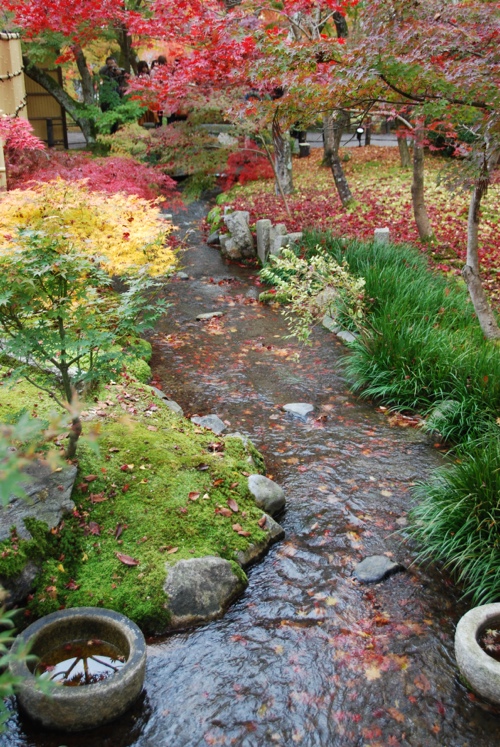 My friend Mari, my Kokedera partner, sent me a text message telling me she was at Eikando temple and that the autumn leaves there are incredible now. The autumn transformation of leaves into brilliant shades of red, orange and yellow is called “koyo” in Japanese. Since we are here for a bonus second year we’re really trying to see all the best koyo that this season has to offer. We live about 45 minutes away from Kyoto, thus we have easy access to some of the best koyo sights in Japan.
My friend Mari, my Kokedera partner, sent me a text message telling me she was at Eikando temple and that the autumn leaves there are incredible now. The autumn transformation of leaves into brilliant shades of red, orange and yellow is called “koyo” in Japanese. Since we are here for a bonus second year we’re really trying to see all the best koyo that this season has to offer. We live about 45 minutes away from Kyoto, thus we have easy access to some of the best koyo sights in Japan.
The day after Mari texted me, Monday, November 20, John and I set out for Kyoto, to find Eikando and the trees with fire, gold and green. Eikando Temple, or Zenrin-ji, is the head temple of Jodo-shu Seizan Zenrin-ji sect (of Japanese Buddhism). The temple has more than 1,100 years of history and is dedicated to the celestial buddha Amida.
We rode the Hankyu train from Kita-Senri Station to Kawaramachi Station and then hopped on the #5 bus to the Nanzenji Eikando stop. It was just a short 5 minute walk to the temple from there and basically all we needed to do was follow the crowd that got off the bus. The walk to the temple was through a small neighborhood and the houses were built in the old construction style.
From the very start, even outside of the temple gate, the color explosion was incredible. The trees were red, orange, yellow and green, and even a mix of all four colors on one tree.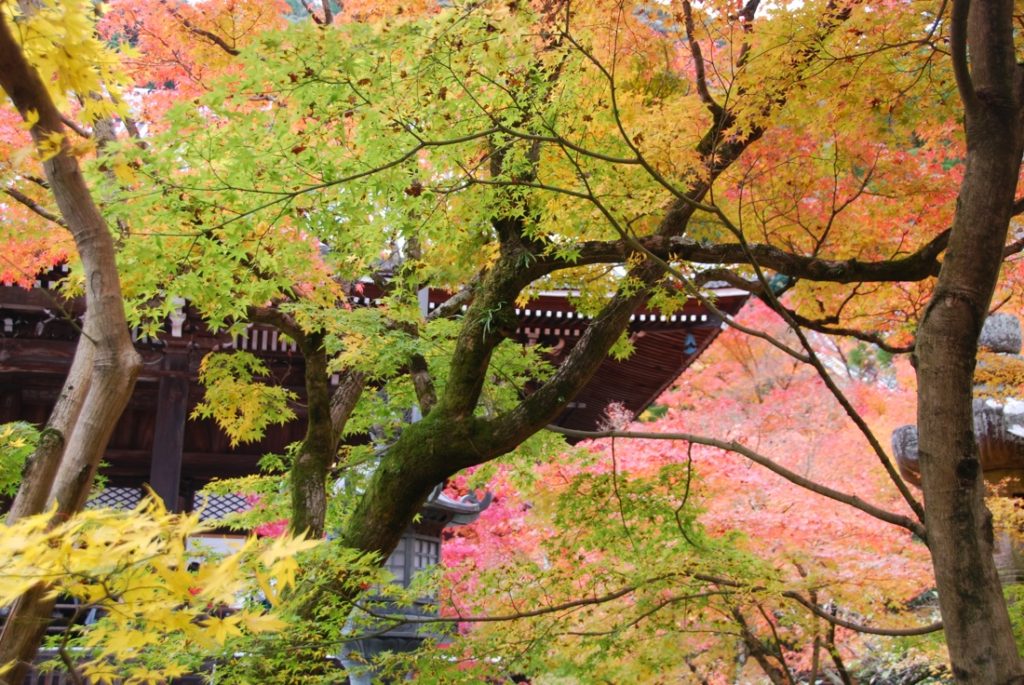
 There is a famous statue inside this temple known as Mikaeri Amida (Amitabha looking back) which people from all over Japan come to see and worship. According to literature from the temple, the story of the statue is that in an early morning in February, 1082, Eikan (a popular head priest and the reason it is called Eikando – literally Eikan Hall) was walking around the platform of the image, as an ordinary religious service in a temple. All of a sudden, the image walked down from the platform and began to lead Eikan. Eikan was so astonished that he could not keep walking. At that moment, the image looked back over its shoulder and said, “Eikan! Follow me.” Eikan saw the holy and merciful pose of the image and desired it to keep the pose for future generations. This is the legend why Mikaeri Amida is looking back.
There is a famous statue inside this temple known as Mikaeri Amida (Amitabha looking back) which people from all over Japan come to see and worship. According to literature from the temple, the story of the statue is that in an early morning in February, 1082, Eikan (a popular head priest and the reason it is called Eikando – literally Eikan Hall) was walking around the platform of the image, as an ordinary religious service in a temple. All of a sudden, the image walked down from the platform and began to lead Eikan. Eikan was so astonished that he could not keep walking. At that moment, the image looked back over its shoulder and said, “Eikan! Follow me.” Eikan saw the holy and merciful pose of the image and desired it to keep the pose for future generations. This is the legend why Mikaeri Amida is looking back.
The temple is also well-known as “Eikando in Maple Leaves”, because of its beautiful garden filled with many maple trees. Especially in late November, many people visit the temple to worship the Amida and enjoy the scenery.
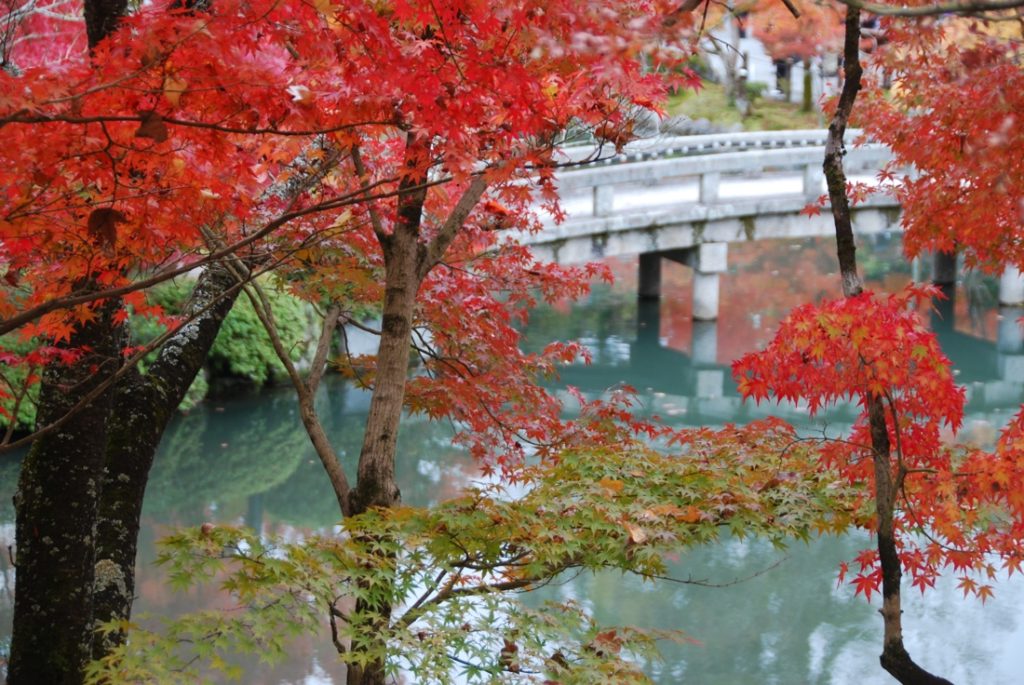 A typical Japanese scene is made of red maple leaves and a bridge. This scene is near the temple’s pond. These sights never get old and there are so many variations on this theme. Here’s a carpet of golden ginkgo leaves. I had a hard time picking out the best photos to post here so there’s a lot of them. Everywhere you look it’s another beautiful view.
A typical Japanese scene is made of red maple leaves and a bridge. This scene is near the temple’s pond. These sights never get old and there are so many variations on this theme. Here’s a carpet of golden ginkgo leaves. I had a hard time picking out the best photos to post here so there’s a lot of them. Everywhere you look it’s another beautiful view.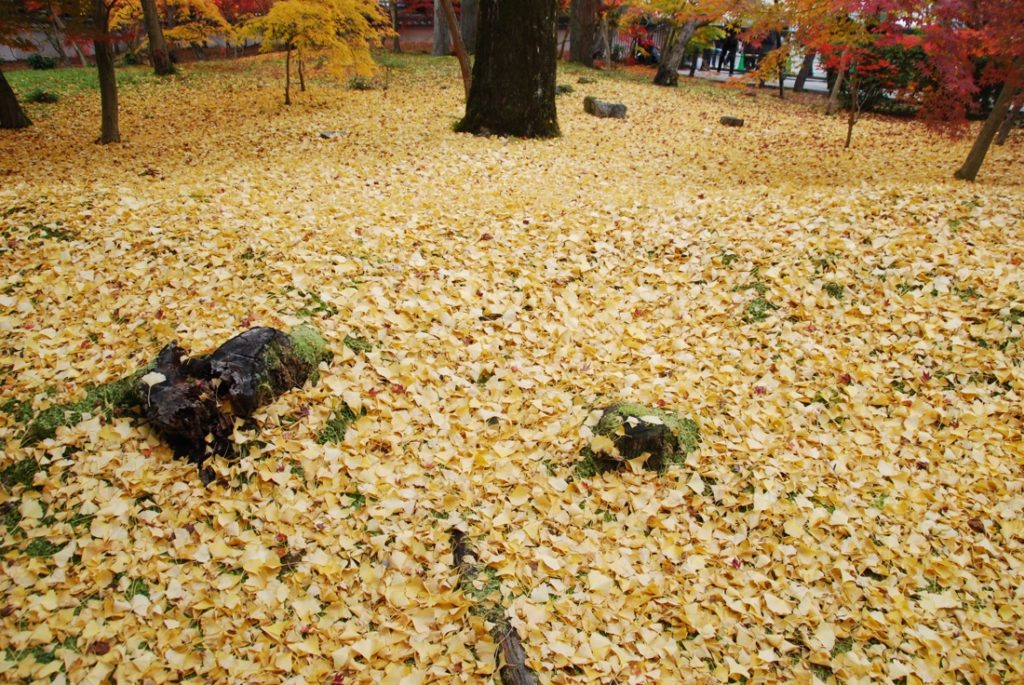
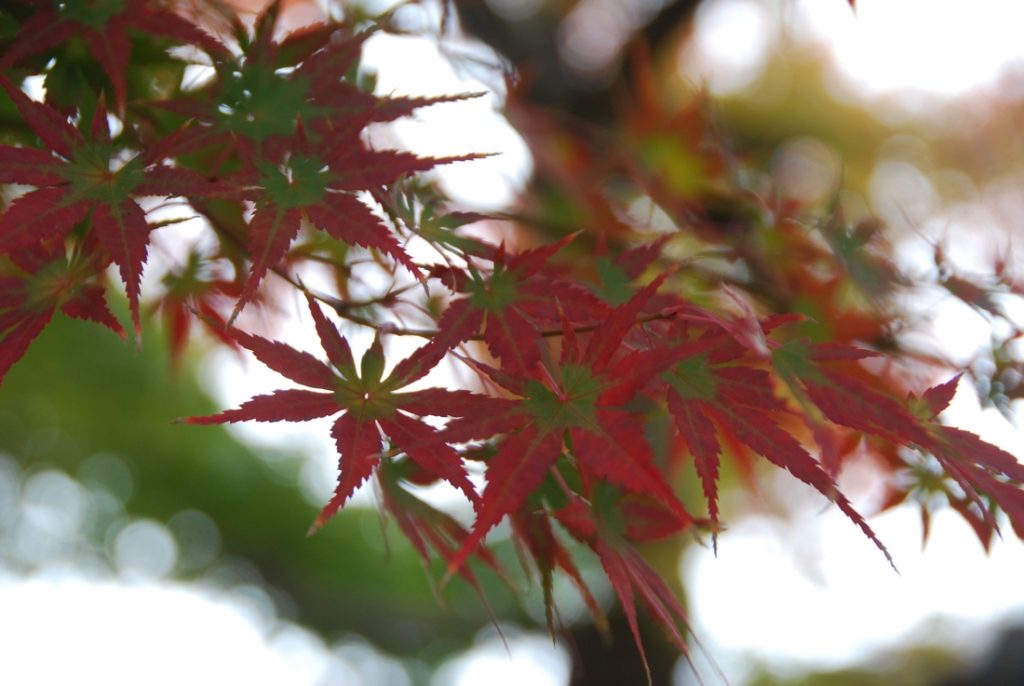
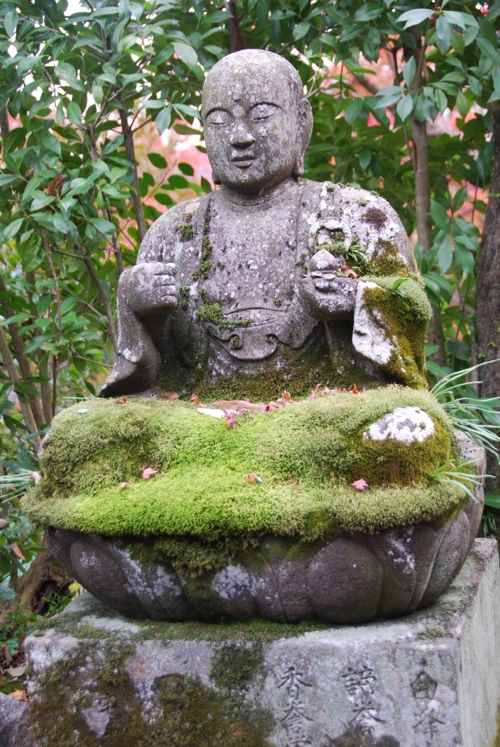
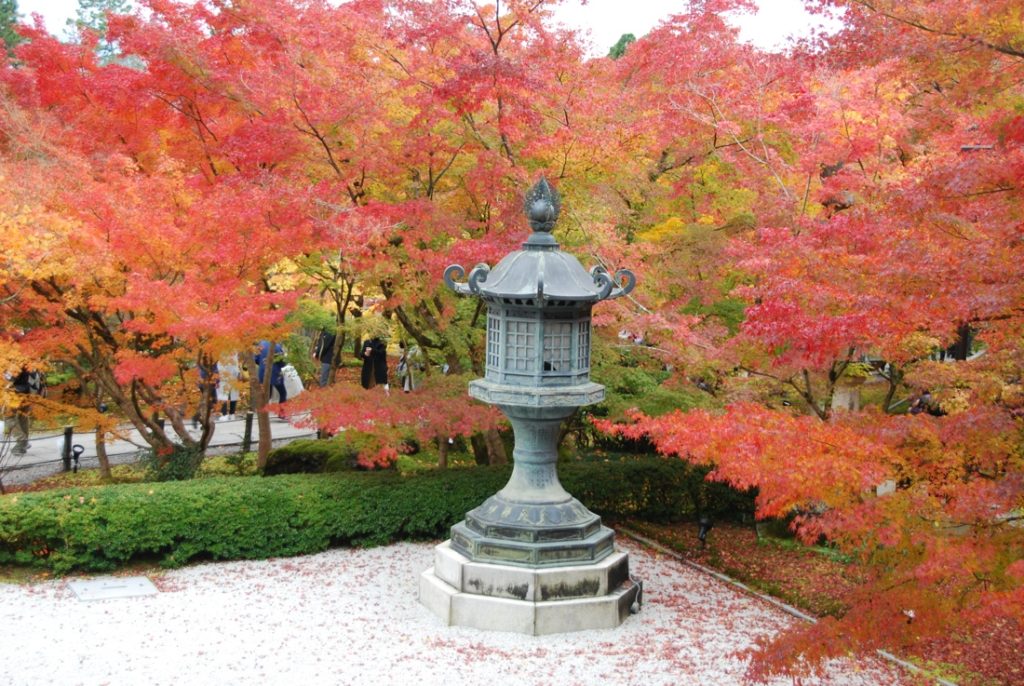
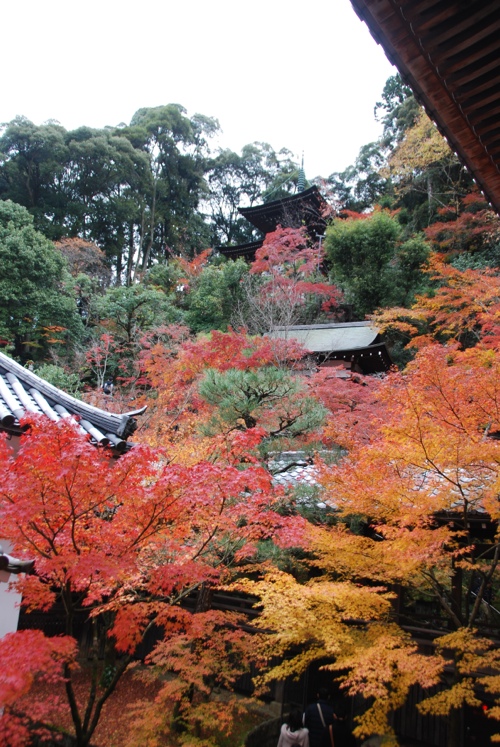
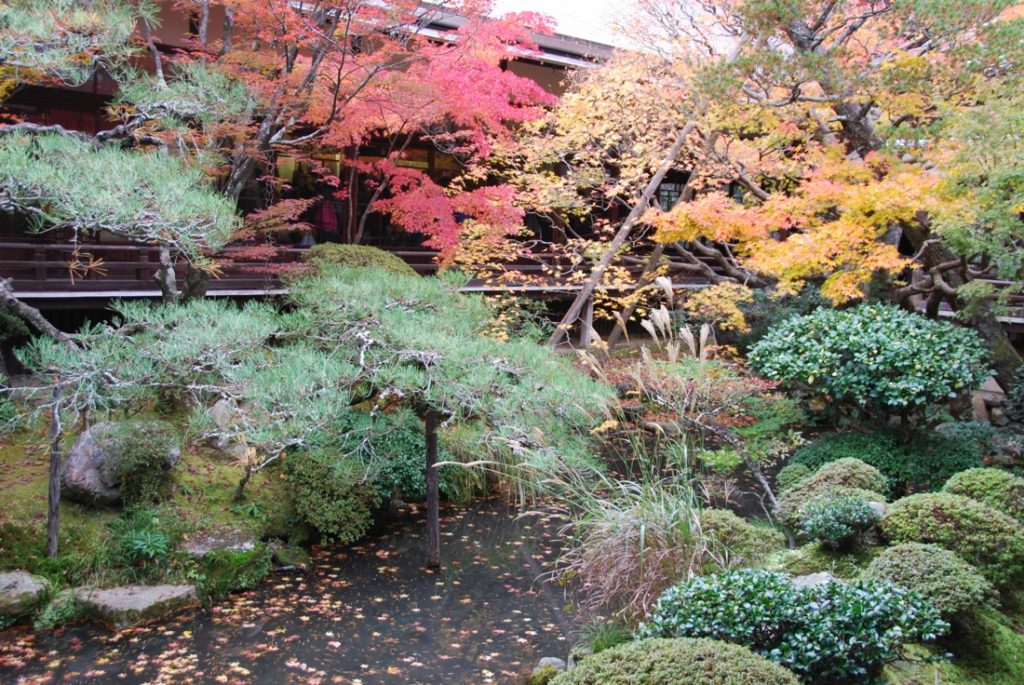
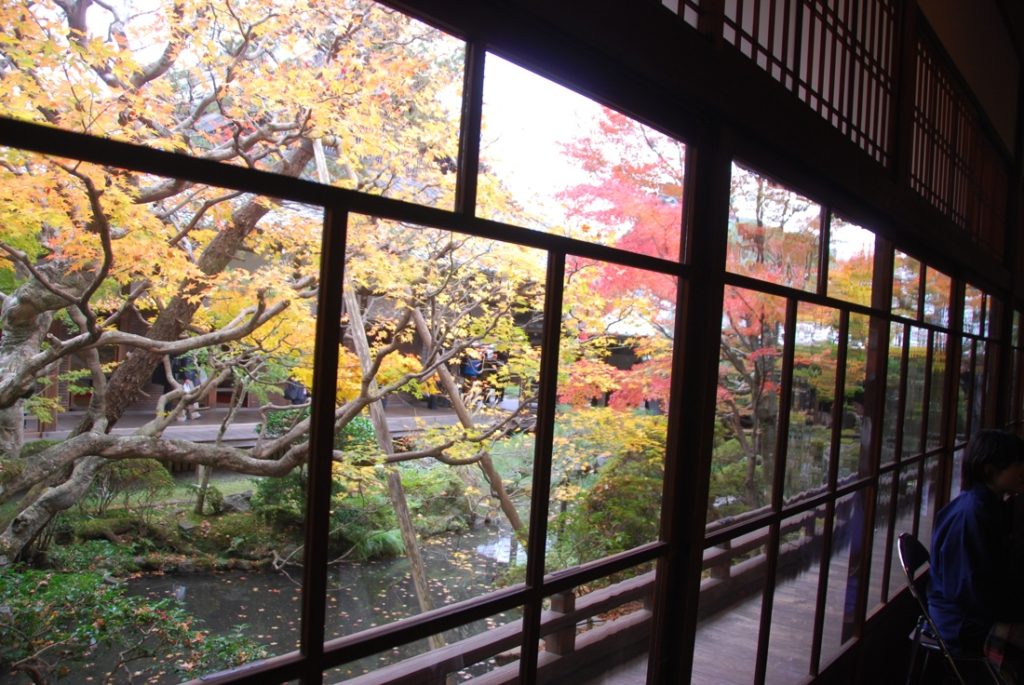
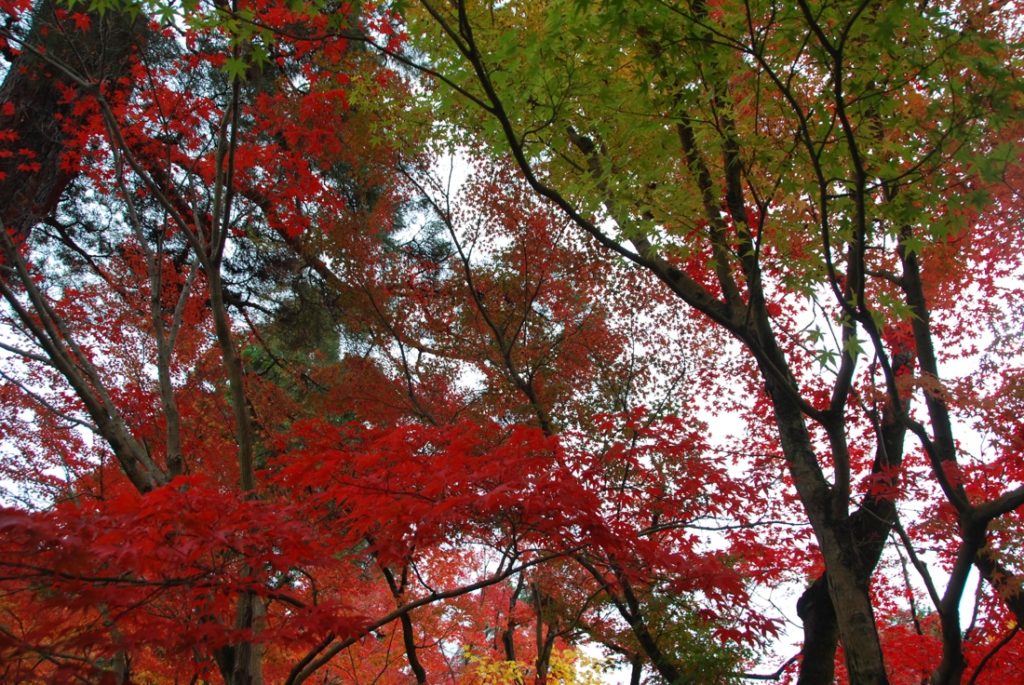
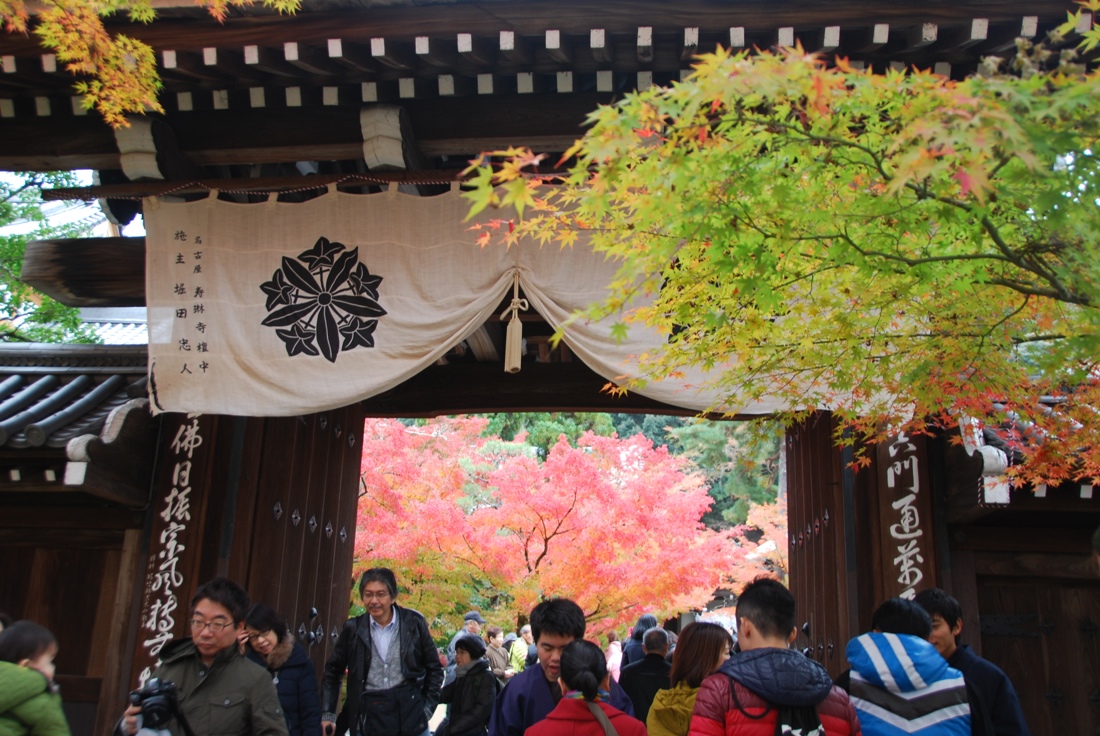
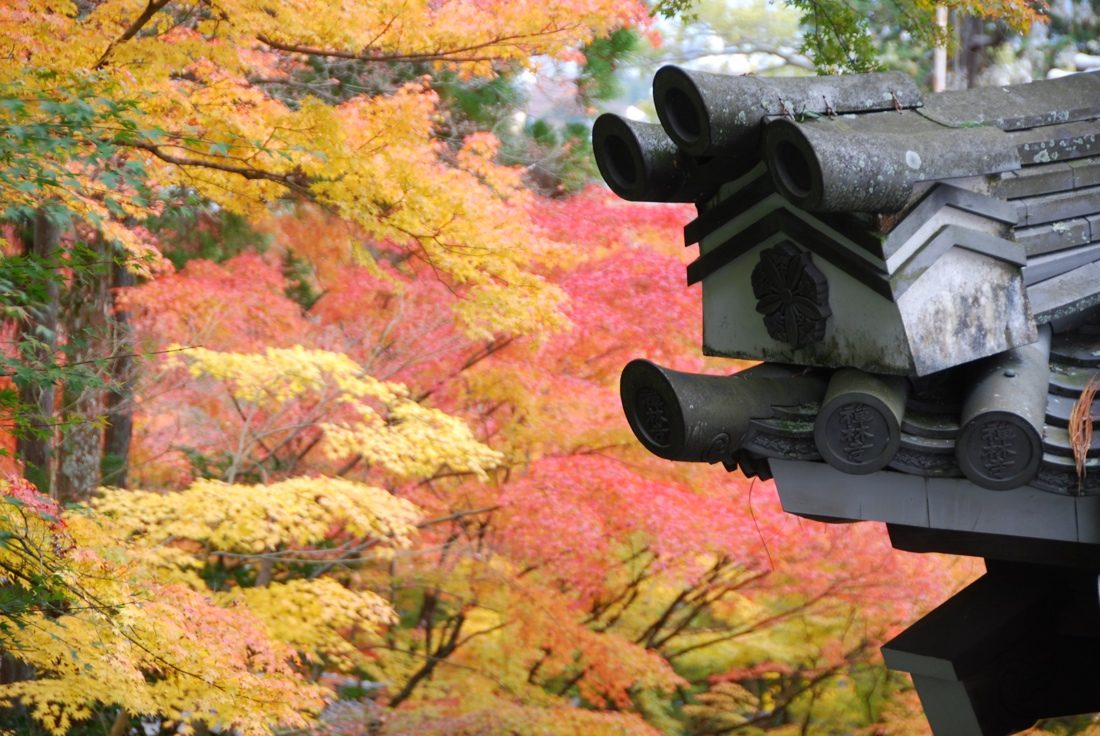
Comments (2)